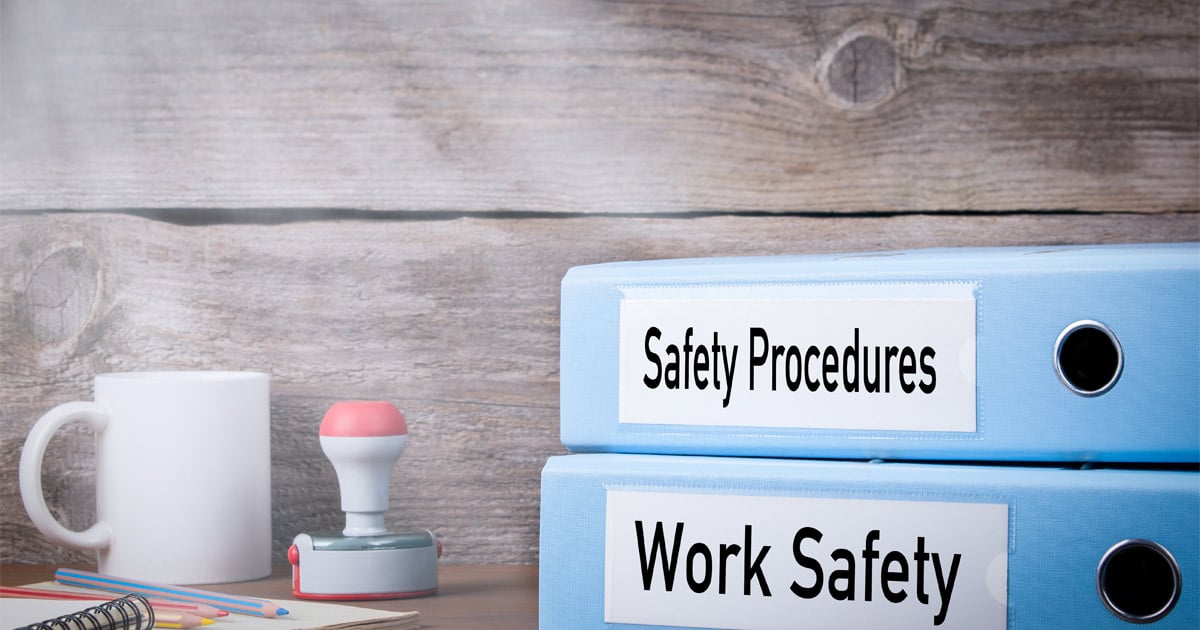
The Coronavirus (COVID-19) pandemic is an example of how important it is to be prepared for an emergency. Every workplace, no matter the size, needs to have an emergency plan in place to ensure that employers and workers will be prepared to respond quickly and effectively.
What are the Different Types of Workplace Emergencies?
The Occupational Safety and Health Administration (OSHA) defines a workplace emergency as a situation that threatens workers, consumers, or the community. An emergency may include the following:
- Human caused hazards such as chemical spills, nuclear explosions, fires, and other workplace accidents.
- Technological disasters like equipment failure, power outages, and cyber risks.
- Biological hazards such as serious and widespread illnesses like COVID-19, bacterial outbreaks, and mold.
- Natural disasters including hurricanes, flooding, wildfires, tornadoes, earthquakes, and snowstorms.
An employer should identify what kinds of hazards or risks exist in their workplace and surrounding environment in order to develop a comprehensive emergency plan that considers all potential disasters. In this way, they can be prepared for every potential scenario, and employees will know exactly how to respond. The ultimate goal of any emergency plan is to reduce injuries.
What Should be Included in an Emergency Plan?
A good emergency plan includes the following elements:
- Emergency numbers for local, state, and federal authorities. Outline clear procedures for reporting fires and other emergencies. Large businesses may have internal emergency numbers while smaller businesses may direct employees to call 9-1-1.
- Evacuation policies and procedures that are clear and easy to follow. These should include floor plans and workplace maps that show safe areas. Designate employees that are responsible for staying behind and shutting down critical operations, safeguarding hazardous materials, turning off electrical systems, and operating fire extinguishers before evacuating.
- A designated assembly location in case of emergency evacuation is necessary. Once an emergency evacuation has been completed, there must be a procedure for accounting for all employees.
- Rescue and medical duties should be assigned to designated workers. This will help ensure the emergency is handled efficiently and quickly.
- Names and contact information. This includes titles and departments for workers responsible for the emergency plan so that they can be contacted for details and further explanation of duties.
- Large businesses may need emergency plans within departments that apply to specific hazards that exist there. There may be different emergency plans at play.
How Should an Emergency Plan be Implemented?
Once hazards have been identified and a workplace emergency plan has been developed, actions must be taken to implement it. A good emergency plan is one that has been tested and practiced. The first step is to share the plan with employees and getting feedback. Often, employees can identify strengths and weaknesses in a plan and help improve it. Resources must be devoted to ensure that supplies and emergency equipment are on hand and easily available. Basic supplies include at a minimum:
- First aid kits.
- Flashlights.
- Warm blankets.
- Hand sanitizer and disinfecting wipes.
- Personal protective equipment (PPE) such as dust masks.
After sharing the workplace emergency plan with all employees, training must take place so that emergency procedures can be practiced and perfected. Training also ensures that each employee knows their role in an emergency so that the procedures can be carried out quickly and efficiently. It also gives workers the chance to practice for different scenarios as every emergency is unique. Anything that does not go as planned in training can be modified and improved.
Also, a crisis communication plan is critical in an emergency scenario. This plan includes how to communicate with staff, the public, and suppliers in the event of an emergency and who will be responsible for doing so.
Forming an Emergency Response Team
Emergency plans are not set in stone, they are constantly evolving and adapting to new hazards and conditions. Forming an emergency response team is a practical way to monitor the emergency plan and continue improving it. After every emergency is resolved or at least twice a year, the plan should be reviewed by the team and updated. The emergency response team can explore ways to improve emergency management and response times.
Safety Checklists
A workplace safety checklist goes hand in hand with an emergency plan. A plan cannot be executed properly if key elements are not functioning. Alarms, fire equipment, monitoring cameras, medical equipment, and emergency supplies are some of the items that require regular maintenance and belong on a safety checklist.
Workplace Accident Emergencies
In 2018, the U.S. Bureau of Labor Statistics (BLS) reported 2.8 million non-fatal work injuries and occupational illnesses. Most minor workplace accidents can be resolved with medical care at the scene, but serious accidents present an emergency situation that employers must be prepared for.
More dangerous work sites include ones with hazardous chemicals, flammable materials, and heavy machinery. In the United States, emergencies stemming from gun violence threaten workers in public service industries, schools, and retail. In every kind of workplace, employers need to be prepared by identifying, removing, and mitigating safety hazards, which includes an emergency plan.
Some work accidents are unavoidable. If an employee is injured at work, they are likely eligible for Workers’ Compensation. A lawyer can help with benefits.
Pittsburgh Workers’ Compensation Lawyers at AlpernSchubert P.C. Advocate for Workplace Emergency Plans
Every workplace should have an emergency plan to lessen accidents and injuries. If you have a work injury, contact a Pittsburgh Workers’ Compensation lawyer at AlpernSchubert P.C. for help with your claim. Our legal team will investigate your case and fight to get you the benefits you need to recover. Located in Pittsburgh, we advocate for injured workers throughout western Pennsylvania, including Allegheny County, Lawrence County, and Washington County. Call 412-765-1888 or contact us online for a free consultation today.
